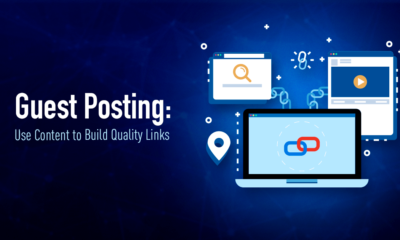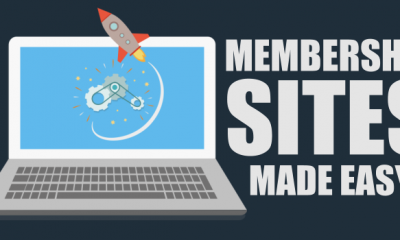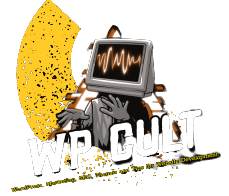Guest Post
Social Media: It’s Time Marketers Start 6 Facebook Marketing Strategy

Introduction:
After years of aimlessly chasing fans, it’s time marketers start driving real business results from Facebook. This requires building a Facebook page that has a clear focus and offers value to customers, leveraging the entire Facebook  tool kit, and integrating Facebook into a broader marketing strategy. To accomplish this, interactive marketers must be both an “oracle” who teaches their organization about Facebook and a “gatekeeper” who manages access to the platform. As marketers mature with the social network and Facebook increases its commitment to brands, together they will revolutionize the advertising industry.
tool kit, and integrating Facebook into a broader marketing strategy. To accomplish this, interactive marketers must be both an “oracle” who teaches their organization about Facebook and a “gatekeeper” who manages access to the platform. As marketers mature with the social network and Facebook increases its commitment to brands, together they will revolutionize the advertising industry.
Marketers haven’t cracked the Facebook code:
From toppling governments to inspiring award-winning films to bring long-lost family members together, Facebook is often the center of attention. And marketers are swarming to it like moths to a flame: 96 of the top 100 advertisers now use the site. Yet while millions of people have “liked” brand pages, most marketers fail to derive value from those relationships. In fact, engagement rates on brand pages are declining rather than increasing. The result? Believe it or not, most marketers don’t even see Facebook as their best option to drive audience engagement (see Figure 1). Marketers are failing to use the platform to its full potential because:
- They lack focus. In their race to start a Facebook page, many marketers forgot an integral step: setting clear objectives. Now they’re left with Facebook pages that have no purpose other than collecting “likes.” This lack of objectives not only hurts from a business perspective but also means that fans don’t get any real value from liking the brand.
- They don’t understand the platform. Facebook is unlike any platform marketers have ever seen — it’s like a miniature Internet with its own set of rules. EdgeRank, Facebook’s system for deciding which content appears in the newsfeed, is similar to search engine optimization (SEO) but requires a different kind of optimization. Facebook Ads are a cross between banners and paid search — and don’t quite follow the conventions of either. Marketers struggle not only to understand each of these pieces individually but also how they work together and how they’re evolving.
- They don’t have the right resources in place. Facebook doesn’t cost as much in money as it does in manpower — but many marketing organizations don’t have appropriate manpower in place — the dedicated people or the content development and sharing processes needed to be successful.
- They seek the wrong measurements. Marketers say that measuring return on investment (ROI) is their biggest challenge in social media, and measuring Facebook is no exception. Too many marketers ask “What is the value of a fan?” and not enough marketers understand their fans’ value in terms of loyalty and influence or Facebook’s impact on their business. Marketers won’t be able to prove value until they begin to ask the right questions.
Facebook Hasn’t Made Brands a Priority
Just as marketers have struggled to use Facebook properly, Facebook has struggled to help them succeed. In fact, for a company that relies on advertising revenues, Facebook hasn’t done much to make life easier for advertisers:
- It does not make content management easy. Marketing on Facebook requires a constant flow of content. Yet marketers aren’t set up to be publishers — and Facebook offers only limited options for managing multiple pages or handling multiple languages. Coca-Cola experienced this downside when Portuguese-language content accidentally appeared on its US page, inciting some users to respond with hate speech on a page that promotes happiness.

- It constantly changes the rules without warning. Facebook’s frequent and unilateral policy changes make it difficult for marketers to trust and invest in the platform. Just ask any pharmaceutical company: When Facebook recently removed the ability to disable user comments, it put the pharma companies at direct risk of violating government regulations and ultimately forced many to shutter their Facebook pages.
- It offers marketers limited data. Facebook is one of the only major websites that doesn’t allow third-party ad tags. Not only does that force marketers to rely on Facebook-provided data that one social analytics executive described as “lightweight,” but it means marketers can’t compare Facebook campaigns with other channels like search and banners or include them in attribution analysis. Without reliable, comparable data, brands can’t determine how important Facebook really is to their marketing mix.
Follow 4 Steps to Make Your Facebook Marketing Work:
Collecting fans without purpose isn’t enough; marketers must get serious about driving business results from Facebook. To do so, take four steps that will help you squeeze all of the possible value out of your Facebook program:
- Set clear objectives. If you don’t know what you want to achieve, you probably won’t achieve much at all. Define objectives that provide real value to your business.
- Build a page that provides value for your fans. Bring focus to your Facebook marketing by building a brand page that not only accomplishes your business objectives but also gives fans a reason to continually engage the brand.
- Use the full Facebook tool kit to increase reach and engagement. A brand page shouldn’t sit on its own. It’s imperative that you combine features such as ads, events, and apps along with your brand page to get the most out of the network.
- Integrate Facebook into your marketing mix. Facebook is not an island. It’s as important to integrate it with the rest of your marketing as with any other medium.
Set Clear Objectives
Start by rethinking what your Facebook page is going to accomplish for your business. Facebook’s versatility lets you choose from objectives that span almost every part of the marketing mix, including:
- Generating word of mouth. Facebook’s mission is to “give people the power to share” — and it has succeeded spectacularly. Over 4 billion “things” are shared every day, often related to products and brands. Facebook is the No. 1 site where consumers see social content about products and services, well ahead of any other social network. And according to Forrester’s Tech Marketing Navigator, the word of mouth generated on social networks plays a growing role in the purchase path for consumer technology products (see Figure 2).

- Driving people down the sales funnel. While it’s unlikely to replace dedicated direct marketing channels like Google AdWords, Facebook can drive some forms of direct response. John Deere uses Facebook content to tempt its half-million fans into a lead-generation site and reports that Facebook drives leads at a rate comparable to direct mail.

- Increasing loyalty. Facebook offers marketers a new way to engage their most loyal customers — and to get them to spread marketing messages. For instance, Tasti D-Lite allows fans to link their TastiRewards accounts to Facebook. Then every time they make a purchase, a customizable message is posted on their Facebook page.

- Helping your peers in product development or eBusiness. Savvy consumer product professionals are tapping Facebook for new ideas and to create new functionality. Starbucks created an application that allowed people to create their own Frappuccino online and then share with friends on Facebook. And Facebook has the potential to drive shared purchases. For instance, LiveNation’s Ticketmaster has integrated Facebook’s social graph into its interactive seating chart, allowing people to see where their friends are sitting and buy seats nearby.
Build a Page That Provides Value for Your Fans
Today’s brand pages are littered with a random mix of company news, promotions, advertising, and other content focused on what marketers want rather than what fans want. Carolyn Everson, VP of global marketing solutions at Facebook, says that the brands that succeed on Facebook are “the ones that give people a reason to be fans.” To provide value to the fans you should:
- Learn who your fans are and what they want. Facebook doesn’t provide much data on your fans, but there are ways of getting more information through opt-ins. EMI worked with campaign management platform Neolane to develop a Facebook app that collected opt-in customer information and then integrated it back into EMI’s customer database. Knowing who your fans are can help you determine not only how valuable they are as customers and influentials, but also what kind of content and engagement they’re looking for.
- Use Facebook data to dynamically optimize your content plan. While Facebook data is limited, dig through what’s available to learn how your community is responding to your posts. PageLever — an analytics tool that specializes in optimizing brand pages based on available Facebook data — pulls near real-time data from Facebook’s application
- programming interface (API) to help companies learn what content types are performing the best, which demographics are responding, and what time of day is optimal for posting. This data can then be used to create a dynamic content plan that gets the best response out of the community at any given point in time.
- Use apps to create a richer experience. A “like” allows fans to read and comment on your posts, but to create deeper engagement like games and contests you’ll need an application. For Valentine’s Day 2011, Target ran a contest called “The Super Love Sender” that let people vote on which charity would receive $1 million from the brand. Target’s Facebook app allowed fans to send friends personalized valentines and get real-time updates on which charity was in the lead.
- Keep your community active — even in down cycles. Your Facebook page is not a campaign, it’s a community of people who have raised their hands as brand advocates. As Scott Weisbrod, VP of strategy at Blast Radius told us, “Facebook allows for a more meaningful relationship than search or email. It’s important to build a content plan and calendar not only for your big campaign pushes but also during the down cycles when you’re not doing campaigns.”
Integrate Facebook into Your Marketing Mix
Facebook is too often treated as an isolated asset rather than an integrated part of the marketing mix — creating inconsistency in both the marketing plan and with the end-user. To integrate it interactive marketers should:
- Incorporate Facebook’s social graph into your existing web properties. Facebook makes it easy for you to bring its massive sharing network to your website, creating additional reach and interaction with your content and experiences. Toymaker Step2 built a Facebook Connect login into its site so customers could repost their product reviews on Facebook as well. The results: The amount of traffic it got from Facebook grew 135%, and the revenue from that traffic grew 300%.
- Make Facebook promotions the foundation of broader campaigns. Chances are that your broader campaigns will create at least some conversation on Facebook; by making Facebook the center of that campaign you can incite both conversation and participation. Corona’s “the most liked beer in America” campaign featured the faces of its Facebook fans on a billboard in Times Square — both creating reach (signs in Times Square typically get 1.5 million impressions per day) and driving 200,000 new “likes” for the brand.
- Use Facebook data to make other marketing programs more effective. While Facebook makes it hard to learn who your users are, it’s relatively easy to track their actions — and use that information to improve the rest of your marketing programs. For instance, customer relationship management (CRM) vendor Merkle can connect Facebook fans to existing CRM data. And marketers should work with vendors like DataXu, a demand-side media buying company, which now includes data from Facebook campaigns in its display media optimization algorithms.
The leading performance media platform for agencies, Social Media Marketing Services helps agency marketers buy, track, manage, optimize, retarget, and report on media across all channels—including search, display, and social media.
Dynamic Buzz provides the social media management for agencies buying ads on any online channel, helping them handle all tasks associated with performance advertising within an integrated platform.
Guest Post
5 Reasons You Should Never Give Up When Trying To Make Money From A Blog
Did you know that it’s easier to increase your earnings each month from 2K to 10K than it is to go from 0 to 2K? This is because when you reach the 2K per month point you already have a well-oiled machine. Starting from scratch is really hard and it can almost take forever to earn a decent wage from your blog. If people know how long it took before they would be earning enough money to quit their job they might never start blogging. Those are the people who quit before they see any results.
If you want to be one of the people with a well-oiled machine you have got to put the work in now. The last thing you want to do is quit because you might have only been a few months away from hitting the jackpot and you would have never known. You will be making enough money to quit your job one day, even if it takes you 3 years to do it. That is a long time for anyone, so I want to look at some important things that can give you encouragement and will hopefully stop you from giving up.
Little wins when you least expect it
You could be doing your thing and nothing is going right for you. It’s not for your lack of trying because you are putting in a lot of effort, but for some reason, it almost feels like you are going backward. Then one day you get an email asking if you would like to be featured on a big blog. Or you might receive thousands of visitors because the right person has linked to an article you wrote. Those kinds of things can’t be planned for and they just happen somewhere along the way, usually in your second or third year.
You become well known
When you are trying to network with people it is draining. You try your best to be nice to them and it’s not working. They might respond to a tweet or a blog comment, but it’s obvious they never gave it much thought and they were just trying to be nice. They still don’t know who you are. When you stick at it and have been constantly on someone’s radar for a few years they will definitely know who you are unless they are senile. You just have to stick around and wait for the magic to happen.
Sometimes turning up is enough
People get far too stressed out about how much effort is required. I think there are a few people who don’t even get any sleep because they try too hard. Sometimes all you need to do is turn up. I know that might sound strange, but you don’t need to start doing everything possible to succeed. You just need to follow a straight path and keep publishing posts for your readers. Then when you see an opportunity you should snap it up. Sometimes smart thinking beats going crazy.
The snowball effect
Have you ever made a giant snowball? When the snowball is small and it starts to roll it picks up some snow and it gets a little bigger. When it’s huge it will pick up much more snow and it will get bigger a lot quicker. This is what happens with a blog and in the beginning, you are the small snowball. No matter what you do there is only a certain amount of snow you can pick up. When you have been around for years your snowball will pick up much more snow with everything you do.
Becoming better at everything
Everyone who starts out writing doesn’t have their voice, but they find it after a year. They start out doing rubbish videos, but soon the quality will rival anything you see online. Throw in podcasting, marketing, networking, and millions of other things that make people successful. Even though it might seem hard to believe, you get better at things the more you do them, so sticking in for years will mean you turn into a great blogger who can’t fail.
Featured images:
 License: Royalty-Free or iStock source: http://pixabay.com/static/uploads/photo/2013/03/10/06/44/blog-92132_150.jpg
License: Royalty-Free or iStock source: http://pixabay.com/static/uploads/photo/2013/03/10/06/44/blog-92132_150.jpg License: Royalty-Free or iStock source: http://pixabay.com/static/uploads/photo/2012/04/12/12/33/black-29827_150.png
License: Royalty-Free or iStock source: http://pixabay.com/static/uploads/photo/2012/04/12/12/33/black-29827_150.png License: Creative Commons image source
License: Creative Commons image source License: Creative Commons image source
License: Creative Commons image source
Blogging is an art in itself and many people startup with much fervor and then give up citing difficulties. The author in today’s guest post advises us why not to do such a thing. Along with his daily work, Kish Winner Exposes the property to get rich scam seminars to alert people about the dangers online.
Guest Post
Increase Your Chances Of Success By Using A Virtual Office.
The poor economic climate here in the UK has left many small businesses struggling to survive. Many have had to put plans of growth on hold as they simply cannot secure the finance they need from the banks. If you are looking to expand your business in the near future and increase its chances of success, why not consider utilising the services of a virtual office? In this article we will explain how virtual offices can benefit small businesses and help them to achieve their goals successfully.
 Benefit #1: Prestigious business address
Benefit #1: Prestigious business address
The quality of your business address goes a long way when it comes to creating the right impression on your customers. If you use a virtual office in a big city like London, you will immediately become associated with the other successful businesses that reside there. A prestigious business address (courtesy of your virtual office) can help you to build up you customers’ trust in your company and widen your customer base nationally or even internationally. Creating the impression of success is the first step to take and will help you to compete with some of the larger players in the industry you are part of.
Benefit #2: Improved customer service
Today companies simply cannot operate without providing their clients with a good customer service. The better your customer service is, the happier your customers will be. This will make them more likely to recommend you to their peers, helping you to gain more clients and increase your profits. Using a virtual receptionist can help you to improve your customer service, which will in turn increase your chances of success.
Virtual receptionists have the skills, knowledge and expertise to be able to offer your customers the best service possible. Whether you lack customer service skills yourself or simply do not have the time to handle your customers’ calls, a virtual receptionist is the perfect solution. Whilst answering your customers’ calls in a friendly and professional manner, many virtual receptionists also offer extended hours of service. This means that your customers can contact your business at a time that is most convenient to them. Increasing your business contact hours is a great way of pleasing customers, which of course has an impact on the overall success of your business. A good reputation goes along way after all!
Benefit #3: Increased focus on important business tasks
When handling all aspects of their business themselves, many business owners end up having to turn down work and let down clients because they have to work non-profitable tasks into their busy schedules. By working with a virtual office you can outsource some of your non-profitable tasks to a virtual assistant. This will lighten your work load enabling you to spend more time on doing the things you do best, such as securing new clients, growing your business and guiding it into the realms of success.

Conclusion
Building up a positive reputation for your business is the key to success. This is something that is easily achievable with the help of a virtual office. Not only will you be able to secure a prestigious business address for your company which will create a great first impression on potential customers, but you will also benefit from the expertise of virtual assistants in terms of customer service. The more effort you put into creating a good impression on customers, the more likely they will be to recommend your business and use your services again and again. The more people that know about your business, the more potential there is to secure new clients, which will in time lead to higher profits and overall success.
Featured images:
 License: Creative Commons image source
License: Creative Commons image source License: Creative Commons image source
License: Creative Commons image source
Written by Nathan Griffiths who recommends trying out Manchester Virtual Office
Guest Post
Why And How SEO Services Are Extremely Beneficial.
When it comes to SEO services, there are a number of benefits that you’ll find as a business owner. Using SEO services can help make your business become a little more professional and can take your business to new heights in your online marketing efforts, as well as your rankings in search engines.
Some of the many services that you can take advantage of include copywriting, website redesigning, customer service, link building, social media, and many other internet marketing tactics.
These solutions can help in a systematic manner and this can give your business the advantage it needs. These services are provided by a number of companies that offer a wide array of experience in different elements of SEO.
With this experience and working with an SEO company, anything you pay for is going to help your business gain an online presence and can help gain a better reputation.
Beat Your Competition
One of the biggest aspects of using these SEO services is that they are going to give you an advantage that not many other sites currently have. There are a number of websites that have different services working for them but some are not as professional as using SEO services.
Using SEO services enables you to get the advantages that you can’t get by doing things on your own. They offer extensive experience and skills that are needed to turn your website and products into lucrative income.
Time Is Money
Some SEO services give you the guarantee of seeing results in as little as a few days while others may need a little bit more time to deliver high quality results. Some may even say to give them a few months and if that is the case, consider asking what their plans are to help you out.
Hiring an SEO service is going to help cut back on the amount of work you have to do for your business especially if you don’t have the necessary experience or skills to get the work done. This is going to allow you to focus on other aspects of your business. An SEO company can take care of implementing strategies to help make your business stronger.
Price versus Quality
These days, it’s become easier for companies to find SEO services that they can afford. This is because there are so many available that the demand is decreasing so they are offering lower rates. Before you hire an SEO service company, call a few different companies and compare what each one has to offer.
Robert is a web security consultant. He focuses on advising his clients on the best vps hosting services for their business. When not assisting clients, he is either at museums, parks, or reading to expand his knowledge.
-
Tips & Tricks4 weeks ago
WordPress Security Hacks
-

 Pages3 months ago
Pages3 months agoWrite For Us – Guest Post
-
Showcase4 months ago
StylizedWeb.com
-
News3 months ago
How to: Show/Hide any div box with jQuery in WordPress
-
Tips & Tricks2 months ago
Remove the title attribute using jQuery
-
Tips & Tricks7 months ago
How to: show/hide a widget in WordPress with jQuery
-

 Plugins7 months ago
Plugins7 months agoTop Membership plugins
-
Tips & Tricks4 months ago
Limit the characters that display on the_title



